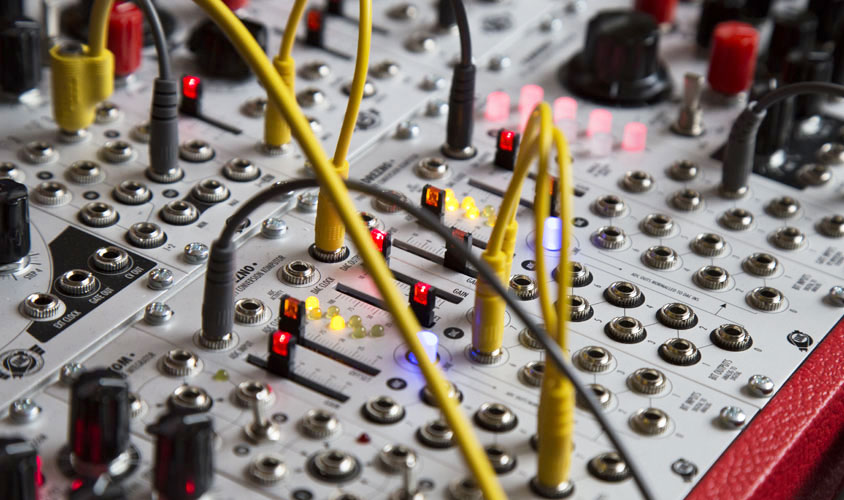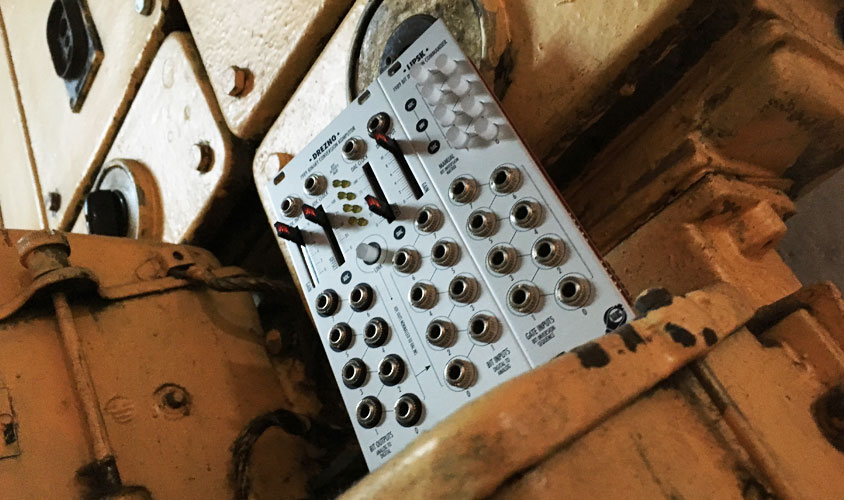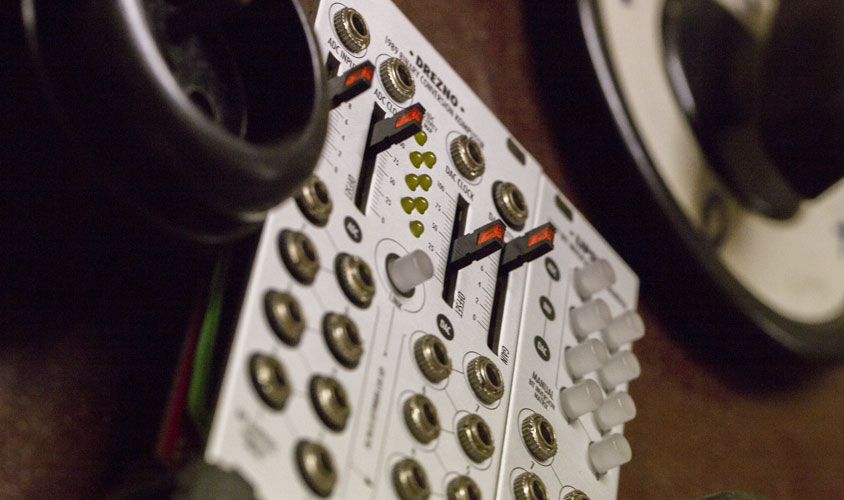Drezno
Drezno
Binary Conversion Komputor
Model of 1989
Resources
Description
Drezno and Lipsk are the first in series of modules which constitute The Leibniz Binary Subsystem, a group of 8-bit signal processing devices offering comprehensive digital signal manipulation, as well as audio signal, control voltage, trigger, and gate generation. Drezno is the input/output front-end of the system, consisting of an analog–to–digital converter (ADC) and a digital–to–analog converter (DAC), that alone can be used for manipulating analog signals and voltages based on their binary representation. For detailed description, please refer to the manual.
Features
- Universal subsystem for creating and processing analog signals in the 8-bit digital domain
- Suitable for CV and audio processing with no aliasing
- Independent ADC & DAC
- Near 2Mhz internal clock with external clock inputs to both converters
Technical details
- 12hp, skiff friendly
- Current draw: +50mA / -35mA
- Reverse power protection
Expandability
Lipsk is a binary logic processing expander module that can flip (invert) individual bits of the digital signal representation. There are more Leibniz Binary Subsystem elements coming, with specialized and advanced sets of features.
Jena is a digital module that may be used as a flexible waveshaper for CV and audio signals, a wavetable oscillator, a Walsh function generator, or a rhythm generator.
Poczdam is a binary data routing solution for the Xaoc Leibniz Subsystem. It facilitates manual and remote switching between two Leibniz data sources.
Erfurt is a bi-directional digital counter, frequency divider. It has multiple applications: the output of the counter may be used as a phase source driving a digital wavetable, connected to other Leibniz modules it may scan waveshapes in Jena, produce stepped voltages useful for making interesting glissandi with Drezno and any VCO, generate gate patterns animating the spectrum of Odessa harmonic banks, spawn pseudo-chaotic sequences when fed back to Lipsk, etc.




